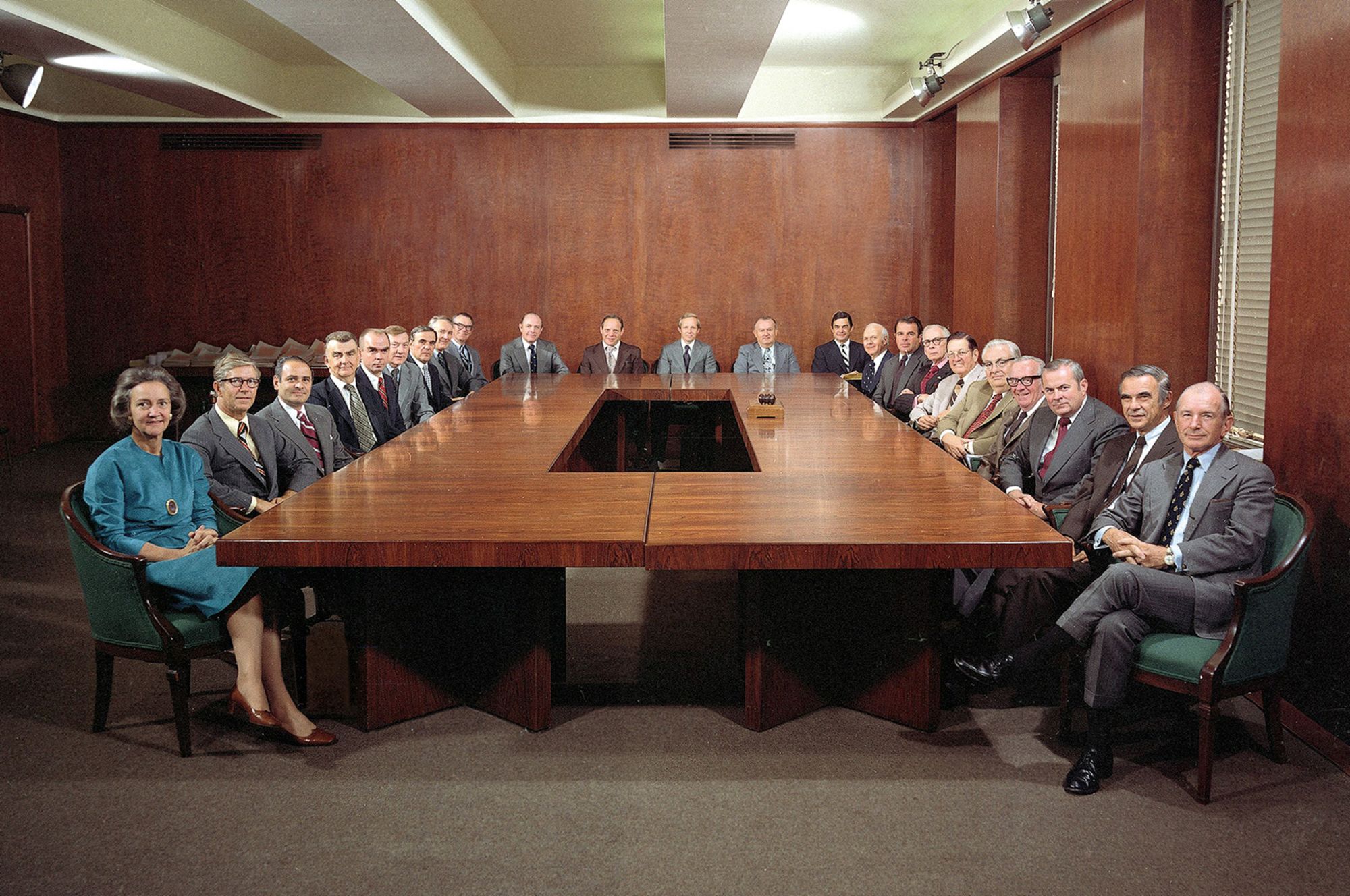Editor’s Note: In Snap, we look at the power of a single photograph, chronicling stories about how both modern and historical images have been made.
The wood-walled conference room has a sterile quality, and the men in muted suits seated around the wide central table are eerily alike, as if duplicated. But this photograph of a high-level corporate meeting has one outlier – a woman with short, curled hair seated on the far left. She lines up perfectly with the group’s symmetry, but she’s conspicuous in her jewel-toned blue dress, her bare legs visible below the hem.
Taken in New York City in 1975, the portrait of the former Washington Post publisher and eventual CEO, Katharine Graham, is just one of countless images that follow a similar visual formula: the only woman in a composition of men. It’s now featured among a collection of such images, in the book “The Only Woman,” by the documentary filmmaker and first-time author Immy Humes.
“The Only Woman” is the culmination of a years-long research project that Humes worked on after making a visual connection between two images. The first was a 1962 photo of American filmmaker Shirley Clarke, who was often (incorrectly) noted as the only female filmmaker of her time, central in a ring of male creative types. The second was a 1951 group portrait of 15 famous abstract expressionist artists – including Jackson Pollock and Mark Rothko – with a single woman, artist Hedda Sterne, in the back, standing on top of a table.
Humes explained in a phone call that she became “obsessed” with the image of Clarke. “What was it like for her? What difference did it make in her life that she was the ‘only woman?’”

Soon, Humes couldn’t unsee the pattern, finding photos of “the same constellation” everywhere, she said. She collected images of scientists, comedy writers, athletes and politicians, among many others, from the mid-19th century, when photography was popularized, until today.
“It started to get almost uncanny,” she said.
The picture of Graham intrigued her because of the image’s history. The formidable publisher had inherited the Washington Post after her father and husband both died. She never thought the role would fall on her, according to Humes’ book, but helmed the newspaper during an era of momentous reporting, publishing both the Pentagon Papers and investigations into former President Nixon’s administration that would lead to his resignation. She became the newspaper’s first female publisher and, later, CEO. She was also the first woman elected to the board of directors at the Associated Press – the group she was seated with in this particular image.
“She’s obviously being honored by being put in the front,” Humes said. “In this case…the woman has a place of honor because of her exceptionality because she’s the only woman.”
That’s not the case with all the images, and Humes found herself categorizing them as she worked on the project.
“There were different ways to become an ‘only woman.’ Either you were a queen…or you were the great, great pioneer,” she explained. And in In some instances, women gained access into exclusively male spaces because of their jobs as maids, secretaries or sex workers, she added.
Humes notes that, as society evolves away from strictly gendered work, these images become more striking. That makes the oddity of each image even more pronounced. “It starts to look absurd to our eye – it starts to look comical. The more we move away from it, we’re able to see it in a different way.”
Top image: A 1975 photo of Katharine Graham, the first woman elected to the AP board of directors



